|
Here's a thing. I adore mountains but am terrified of heights. I can thus stare at a mountain range all day, marvelling at its beauty and majesty, but I'll do so from base level or thereabouts if that's all right by you. A few years ago, I took a holiday in Italy and went on a coach trip to gawk at the Dolomites, the country's very own Alpine Mountain range. As we approached them, the views became increasingly impressive, but the tour guide assured us we were going to a place where we'd get a much better look. It turns out he meant from the top of one of them. The journey there took us along the sort of winding, endlessly upward road that provides you with repeated and extended flashes of your past life and made me wish I'd never come to Italy in the first place. Until we reached the top, that is. The views were – and I can't find another more creative word for this – just stunning. Was it worth that terrifying drive up and the apprehension of a return journey? I'd have to say it was. Would I do it again? At a pinch, yes. Would I climb up the side of one of them with only spiked shoes, pins, a hammer and some rope to get me there? No bloody way.
Mountaineers are a different breed to the rest of us. For them, it's not about enjoying the view from the top but the climb itself, the physical effort and endurance required get where few, if any, have gone before. I've had friends who were climbers, and they could converse for hours about the difficulty of navigating a particular rock face, the obstacles they had to overcome, the risks that they took. Is it about proving themselves in that particularly male manner? Possibly, but one of those former friends was female, and if you're looking to show off your physical abilities to others, then climbing up an isolated mountainside with just a couple of like-minded friends is unlikely to fit the bill.
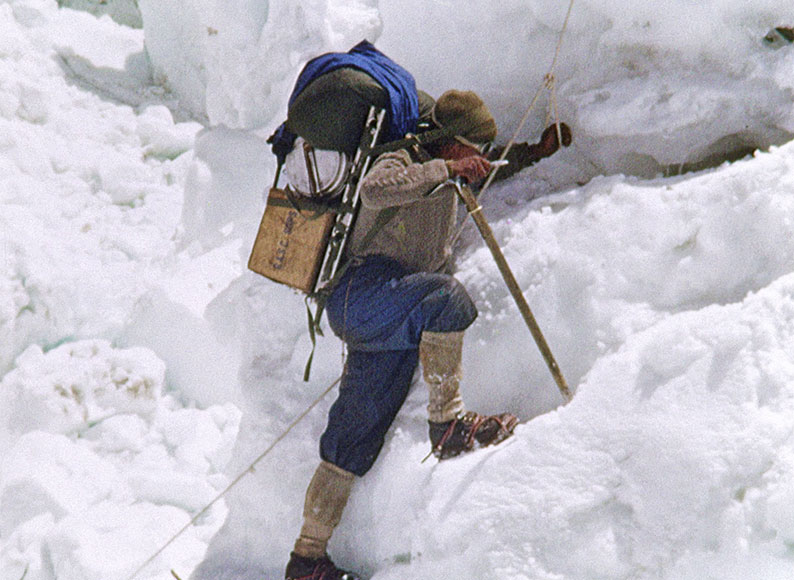
Climbing a mountain is something I've never done and never really wanted to do – a fear of heights is a bit of a handicap for even the most timid of mountaineers – but I do understand its appeal. It represents an adventure, a risk, an exploration in a world in which such activities are increasingly limited and often corporate managed. The definitive reason, the one that has provided mountaineers of all ages with their credo, was supplied back in March of 1923 by George Mallory, when he famously responded to questions from reporters about why he wanted to climb Mount Everest with the glorious riposte, "Because it's there." Of course, Mallory wasn't talking about just any mountain, but the one that represented the greatest mountaineering goal of the day, the highest peak on the face of the planet Earth. A year later, on his third expedition to this very mountain, Mallory disappeared. When last seen, he was just a few hundred metres from the summit. It was to be another 75 years before his body was found.
Once the obsession of a dedicated few, mountaineering has in recent decades expanded its user base considerably. Consider these figures for Mount Everest alone. In 1970 just four climbers reached the summit, in 1980 there were ten, in 1990 it was 72, and in 2000, 146 hardy souls made their way to the top. The Covid outbreak brought the climbs to a complete halt in 2020, but according to the Himalayan Database, by January 2019 there had been a total of 5,294 successful ascents to the summit of this mountain alone.
Even armed with the knowledge from so many previous climbs and dramatically improved equipment and support, any assault on Everest is not a challenge for the timid or ill-prepared – to date, over 300 climbers have died in the attempt. But spare a thought for the pioneers, those who ventured into the unknown with equipment that modern climbers would balk at, and when access to the mountain was restricted to a single expedition per year, and sometimes not even that. In 1953, that slot was taken by a British team led by John Hunt, and included in its number the original expedition leader Eric Shipton, climbers Tom Bourdillon, Charles Evans, George Lowe and Edmund Hillary, and Sherpa mountaineer Tenzing Norgay. You don't have to be part of the climbing fraternity to know how this one ended – Hillary and Tenzing went into the history books as the first men to successfully reach the summit of the world's highest peak. It's one of those nice little ironies that despite the expedition's British identity, it was a Nepali-Indian and a New Zealander who actually set foot on the mountaintop.
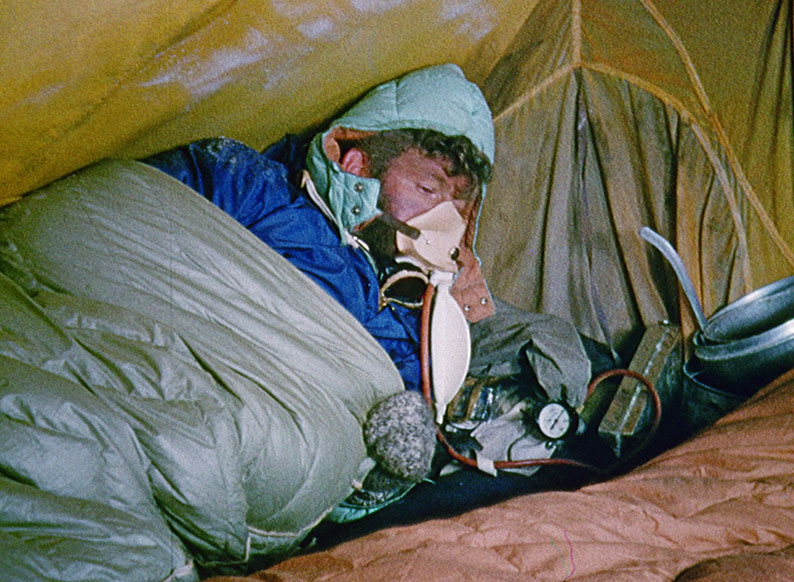
Happily for posterity, a year earlier, a film editor named Adrian de Potier convinced the people at British nature film company Countryman Films that there would be a successful ascent of Everest the following year (according to company founder John Taylor, “he’d worked it all out on paper”), and they thus secured the contract to make a film of the climb. After some juggling to get the project funded, they were able to supply the team with two movie cameras and a stock of Kodachrome film. When principle cameraman Thomas Stobart was taken ill after shooting footage at the base camp, mountaineer George Lowe added a camera, tripod and film stock to his carrying weight (or rather to that of the Sherpas employed to haul the group's supplies), and increased his workload by having to repeatedly pause his climb, set up the camera and shoot footage of the others making the ascent. On the team’s return home, the footage was edited, additional footage was added to pad out the running time to feature length, a score was commissioned, and a narration was written and recorded. The result was The Conquest of Everest, a very British, very 1950s, but still captivating record of a landmark achievement and one of the key events in mountaineering history.
Part of the film's fascination in an age of high-tech mountaineering is its record of the equipment the 1953 team had to work with, some of which, such as the tie-on crampons and Heath-Robinson oxygen tank support cradles, look almost home-built. The image of old school British explorers out for a bit of an adventure is briefly suggested by the sight of a pipe-smoking mountaineer in knee-length shorts, but it soon becomes clear just how professional these climbers were, and how carefully and thoroughly they had planned their expedition. Their only real stumbling block proves to be an underestimation of the full effects of oxygen deprivation, which is understandable given that no-one had ever climbed to and returned from that height before.
A sometimes heroic commentary, written by Louis MacNeice and spoken by actor Meredith Edwards ("What they are carrying also" he says of the heavy packs hauled by the Sherpas, "is a dream that is turning ripe"), a dramatic and emotive score by Arthur Benjamin, and some unsubtle sound effects (the wind is never less than deafening) nonetheless drive the film forward and communicate very effectively the experience and difficulties of the climb. Useful information on the route is provided by John Hunt, with Hillary giving a matter-of-fact description of his and Tensing's arrival at the summit, a key moment somewhat inevitably missed by Lowe's camera, although the reunion with their waiting colleagues strikes a suitably triumphant note.
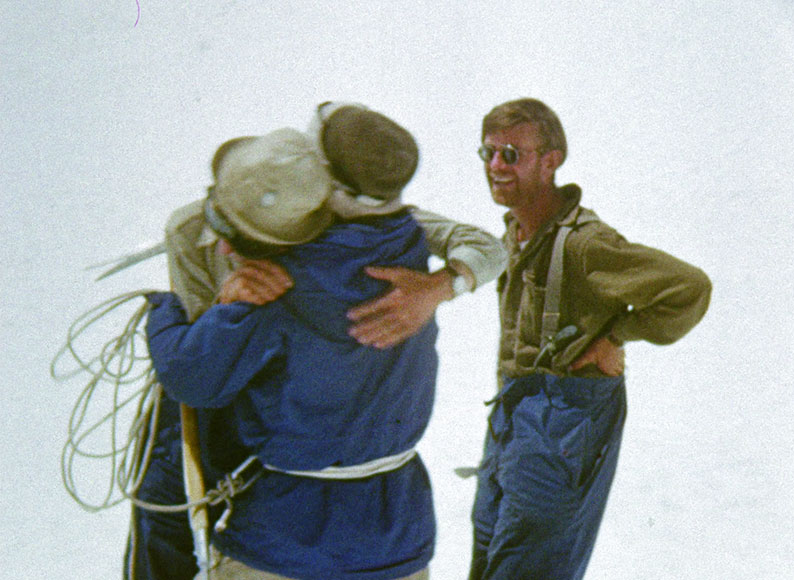
Lowe's colour cinematography is often striking. This is no mountaineer-with-a-camcorder imagery, but carefully composed and sometimes arresting footage that captures both the beauty and the danger of the landscape. The scale of the party's task, already made to look impossible by a graphical sequence comparing Everest to St. Paul's Cathedral, is wonderfully illustrated by a seemingly endless tilt up from the small figures of the walking mountaineers to the towering height of the mountain's peak. But Lowe also captures the faces and activity of the party and the local people, never forgetting that the mountain, for all its magnificence, is the setting rather than the star.
An as-it-happened documentary of the old school, shot silent with sound effects and narration added later, Conquest of Everest is going to feel dated to those who have come to documentary features via the more aurally and visually lively works of recent years. But like Thor Heyerdahl's similarly styled Kon-Tiki, it works precisely because it's all about the story, not the manner of its telling.
The Conquest of Everest was previously released in the UK on DVD back in 2007 by Studiocanal on the now discontinued Optimum label, and at the time I was of the opinion that the transfer was pretty darned good for a documentary work of this vintage. For this Blu-ray release, the film has undergone what the company’s press release describes as a “painstaking restoration process,” and the results do seem to validate that claim. It should come as no surprise that, despite not boasting HD digital levels of sharpness, the crispness of the 1.37:1 picture and the detail definition are superior here Blu-ray to the previous DVD, but the new disc also outshines its predecessor in just about every other respect. The colours are visibly richer and more vibrant, as well as being more accurate – snow that had a sometimes bluish hue on the earlier DVD is rendered properly as white on this Blu-ray. This more accurate colour timing impacts even shots of personnel interacting with each other or locals in the basecamp, shots that have lost the workaday drabness they had on the DVD and positively shine here. There’s also better definition in the brighter areas of the picture such as snow-covered mountainsides, exposing detail that just wasn’t visible on the DVD. Some image flaws do remain – the archive footage retains its scratches and dust spots, and the the occasional thin scratch and odd hairs that snuck into the camera gate (including a small collection of them in one shot) have been left unmolested. I should note that this new restoration is also being released simultaneously on DVD, but this really needs to be seen in HD to fully appreciate the improvements made, and you’ll also get to watch the film at its originally projected 24 frames per second.
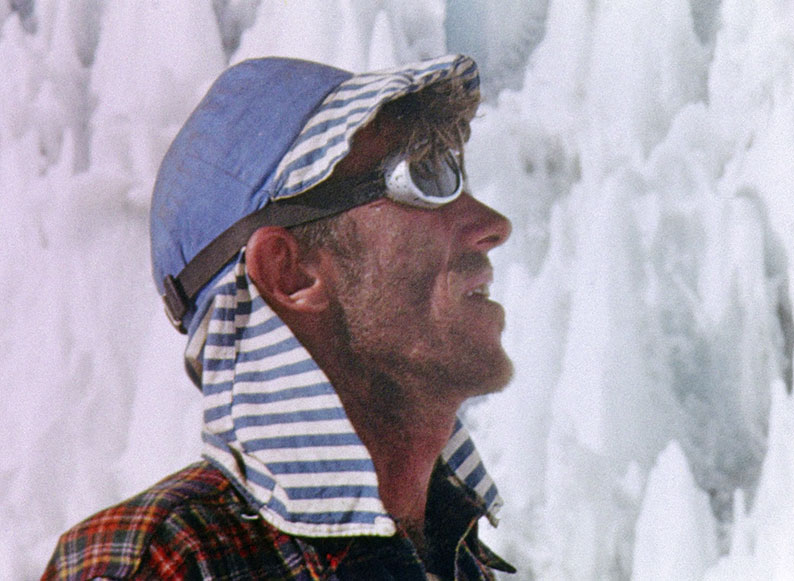
The new Blu-ray (above) compared to the previous DVD (below)
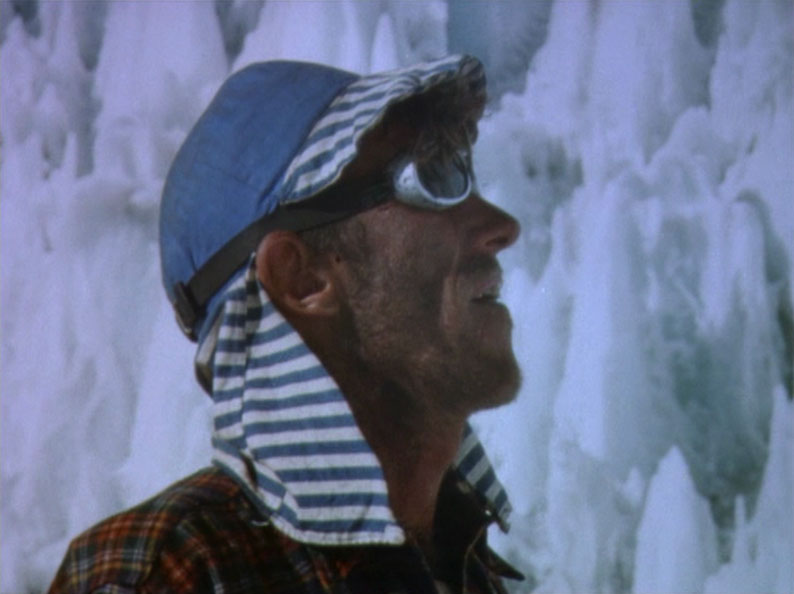
Although the Linear PCM 2.0 mono soundtrack still shows its age, it’s clear this has also undergone some restoration work, something that becomes instantly evident when you compare it side-by-side with the 2007 DVD release. Previous signs of wear and damage have been cleaned up, the narration is clearer, and the music has a richer tonal range.
Optional English subtitles for the deaf and hearing impaired have been included.
Here, the Blu-ray also trumps the previous DVD, but only just. The DVD had nothing, and the new edition does improve on that, but not by as much as I’d hoped, although both included supplementary features are at least appropriate, and the first is more informative than the running time might suggest.
BEHP Interview with Producer John Taylor (1988) (15:28)
A 15-minute extract from a British Entertainment History Project interview with producer John Taylor, who outlines how his company, Countryman Films, landed the contract to make The Conquest of Everest. The hiccups they encountered with the financing are detailed, and some useful information that I wasn’t previously aware of about the shooting and editing of the features is revealed. Usefully, a web link is provided at the end to the full interview, should you want to hear the rest of the interview.
The Conquest of Everest Premiere (1953) (1:03)
A brief newsreel piece on the film’s Royal Gala Premiere in Leicester Square in London, which focusses exclusively on the new young Queen Elizabeth and her hubby as she meets the mountaineers and is given an explanation of the equipment used.
A solid, old-school documentary work receives a welcome and impressive upgrade to the picture and sound, and adds a couple of well-targeted supplementary features. It tells a historically important and fascinating tale, and if this is your subject or you have an interest in British history or documentary works of old, The Conquest of Everest is definitely worth having in your collection.
|